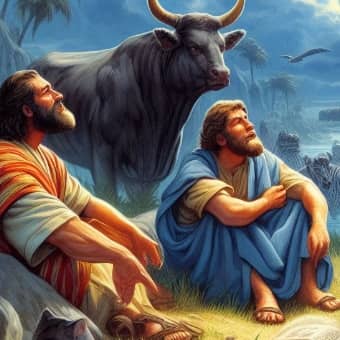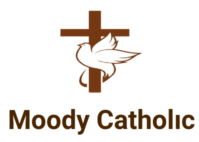Unraveling the Complex Tale of Jacob and Esau
Insights from the Book of Genesis
The story of Jacob and Esau, two brothers whose lives are woven into the complex tapestry of Biblical narratives, stands as a poignant and multifaceted tale of family dynamics, divine providence, and human nature.
Originating from the Book of Genesis, their saga begins even before birth and extends into the unfolding of the destiny of a nation. Here, we delve deep into the details that paint their lives with such vibrant hues of conflict, reconciliation, and ultimately, profound lessons.
This blog post contains affiliate links. When you click on a link on this page and make a purchase I may earn a small commission, at no additional cost to you. Thank you for your support.
Predestined Rivalry
The Birthright and the Blessing
Jacob and Esau were twins, born to Isaac and Rebekah. Despite sharing a womb, they were different in every sense: Esau was a rugged hunter with a penchant for the wild, whereas Jacob was quiet and preferred to dwell in tents. This distinction set the stage for their lifelong rivalry, which was first ignited over Esau’s birthright.

The Birthright Transaction
Esau, famished from the fields, returned to find Jacob cooking a stew. Esau’s immediate craving for food led to a fateful transaction: Jacob offered Esau bread and lentil stew in exchange for his birthright—the privilege due to the eldest son. Esau, prioritizing his immediate need over his future inheritance, agreed, thus selling his birthright for a meal.
The Stolen Blessing
Years later, Isaac, old and blind, decided to bestow his blessing upon Esau. Rebekah, however, favored Jacob and devised a plan to secure the blessing for him. She instructed Jacob to disguise himself as Esau, by wearing Esau’s clothes and covering his arms and neck with goatskins to mimic Esau’s hairy skin.
Deceived by the ruse, Isaac blessed Jacob, believing him to be Esau, thereby granting him dominion and abundance.
Escaping Fury
Jacob’s Flight and Sojourn
Fearing Esau’s wrath after the deceit, Jacob fled to his uncle Laban’s house in Haran, a journey that also fulfilled Rebekah’s desire to find him a wife from her kin.
This move not only protected Jacob from Esau’s conceivable vengeance but also shaped the next phase of Jacob’s life, marrying Rachel and Leah and fathering twelve sons who would become the progenitors of the twelve tribes of Israel.
A Path to Reconciliation
Transformation and Forgiveness
After two decades, Jacob returned to his homeland, only to face a daunting reunion with Esau. In preparation, he sent gifts to Esau and prayed to God, showing a humbled and penitent heart. The night before they met, Jacob wrestled with a divine figure, after which his name was changed to Israel, signifying his struggle with God and humans and his endurance.
When Jacob and Esau finally reunited, the scene was one of unexpected forgiveness. Esau, defying the grudges of the past, embraced Jacob. This act of reconciliation was a testament to Esau’s capacity to forgive and Jacob’s transformation throughout his trials. Together, they buried their father, Isaac, in a rare moment of brotherly solidarity.
Legacy and Lessons
The Enduring Influence of Their Story
The tale of Jacob and Esau is more than a historical recount; it serves as a profound moral fable on human tendencies, divine intervention, and the power of redemption and forgiveness.
Jacob’s journey from a cunning youngster to a mature patriarch underscores the possibility of personal transformation. Esau’s forgiveness showcases the strength in overcoming bitterness and the forging of new beginnings.
The saga of Jacob and Esau, as told in the Book of Genesis, is a lasting narrative that provides enduring insights into the depths of the human heart and the influence of faith. As we revisit their story, we are reminded of the complexities of family, the enduring hope for change, and the unyielding power of mercy that can bridge the deepest of divides.
Thank you for visiting my Moody Catholic blog. If you enjoyed reading this article please tell others by clicking on the share button in the lower right hand corner, right underneath the scroll to top arrow.
